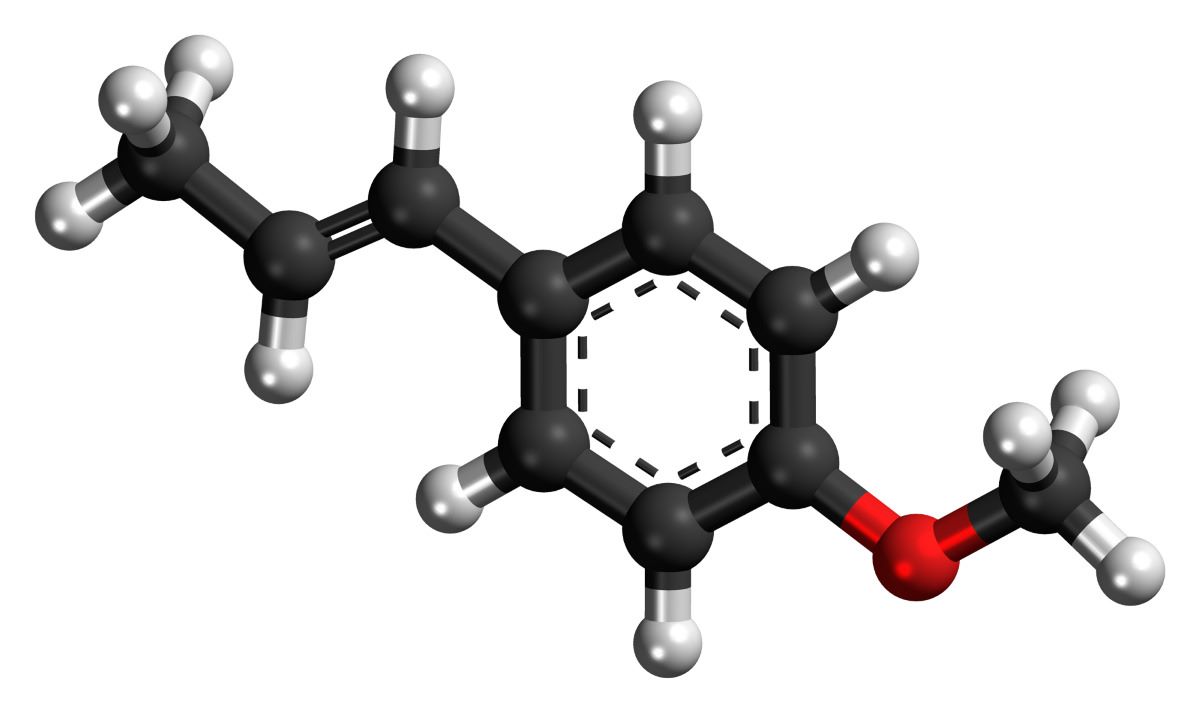
What is anethole? Anethole is a natural compound found in essential oils of plants like anise, fennel, and star anise. It’s known for its sweet, licorice-like aroma and flavor. Why is anethole important? This compound is widely used in the food, beverage, and pharmaceutical industries. It’s a key ingredient in many liqueurs, such as absinthe and ouzo, and also serves as a flavoring agent in candies and baked goods. Is anethole safe? Generally recognized as safe (GRAS) by the FDA, anethole has been used for centuries in traditional medicine for its potential health benefits, including anti-inflammatory and antimicrobial properties. How is anethole extracted? Typically, steam distillation is used to extract anethole from plant sources. This method ensures the purity and potency of the compound.
What is Anethole?
Anethole is a compound found in many essential oils, especially those from anise, fennel, and star anise. It has a sweet, licorice-like aroma and is used in various applications, from flavoring food to medicinal purposes. Let's dive into some fascinating facts about this intriguing substance.
Chemical Properties of Anethole
Understanding the chemical makeup of anethole can help us appreciate its versatility and uses.
- Anethole is an organic compound with the formula C10H12O.
- It belongs to the class of aromatic compounds known as phenylpropenes.
- The compound is a colorless, fragrant liquid at room temperature.
- Anethole is slightly soluble in water but highly soluble in ethanol.
- It has a melting point of 21°C (70°F) and a boiling point of 234°C (453°F).
Natural Sources of Anethole
Anethole is naturally occurring and can be extracted from various plants.
- Anise (Pimpinella anisum) is one of the primary sources of anethole.
- Fennel (Foeniculum vulgare) seeds also contain a significant amount of anethole.
- Star anise (Illicium verum) is another rich source of this compound.
- Basil (Ocimum basilicum) contains small amounts of anethole.
- Anethole can also be found in tarragon (Artemisia dracunculus).
Uses in Food and Beverages
Anethole's sweet, licorice-like flavor makes it a popular choice in culinary applications.
- It is a key ingredient in the production of absinthe, a famous alcoholic beverage.
- Anethole is used to flavor various liqueurs, including ouzo, pastis, and sambuca.
- It is often added to baked goods, such as cookies and cakes, for its unique taste.
- Anethole is used in candies, especially licorice-flavored ones.
- It enhances the flavor of certain savory dishes, like sausages and marinades.
Medicinal Benefits of Anethole
Anethole has been used in traditional medicine for centuries due to its various health benefits.
- It has anti-inflammatory properties that can help reduce swelling and pain.
- Anethole exhibits antimicrobial activity, making it useful in fighting infections.
- It has been shown to have antioxidant properties, which can protect cells from damage.
- Anethole may help alleviate symptoms of indigestion and bloating.
- It has been used to treat respiratory conditions, such as coughs and bronchitis.
Industrial and Cosmetic Uses
Beyond food and medicine, anethole finds applications in other industries as well.
- Anethole is used in the production of perfumes and fragrances due to its sweet scent.
- It is a common ingredient in soaps and lotions for its pleasant aroma.
- Anethole is used as a masking agent in certain cleaning products.
- It is employed in the synthesis of other chemicals, such as anisaldehyde.
- Anethole can be used as a natural pesticide, effective against some insects and pests.
The Final Scoop on Anethole
Anethole, a compound found in anise, fennel, and star anise, has a lot going for it. It's not just a flavoring agent in foods and drinks but also boasts medicinal properties. From anti-inflammatory effects to antimicrobial benefits, this compound packs a punch. It's even used in perfumes and cosmetics for its sweet, licorice-like aroma.
Knowing these facts can help you appreciate the versatility of anethole. Whether you're enjoying a cup of herbal tea or using a natural remedy, anethole plays a role. So next time you encounter this compound, you'll know it's more than just a flavor—it’s a multifaceted ingredient with a rich history and a bright future. Keep these facts in mind, and you'll see anethole in a whole new light.
Was this page helpful?
Our commitment to delivering trustworthy and engaging content is at the heart of what we do. Each fact on our site is contributed by real users like you, bringing a wealth of diverse insights and information. To ensure the highest standards of accuracy and reliability, our dedicated editors meticulously review each submission. This process guarantees that the facts we share are not only fascinating but also credible. Trust in our commitment to quality and authenticity as you explore and learn with us.


